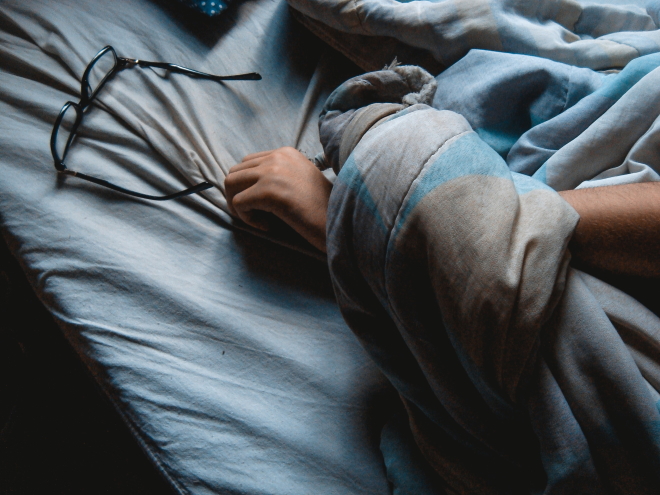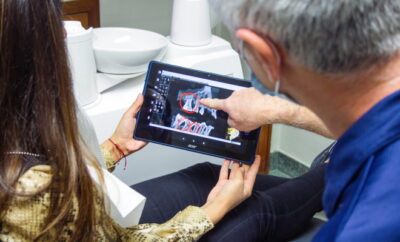
Health x Wellness
Naps are important for a better WFH experience
Many of us continue to work from home (WFH) as we soldier through the pandemic recovery. We explore whether naps are good for the WFH experience and how to use naps to improve cognitive performance and reduce fatigue.
Many organisations continue to encourage employees to WFH as health policy and regulations restrict the number of people allowed back into office; while also advising that only those with essential or critical responsibilities have access to the office environment.
Coordinating work activities are predominantly virtual across a host of digital tools including video calls, chat and messaging apps, and email. This has resulted in more communication between team members, but also a proportional increase in time spent on meetings and conversations typically scheduled back-to-back with little rest time inbetween.
According to a Royal Philips annual sleep survey, 57 percent of Singaporeans’ sleep patterns have been altered since the start of the pandemic, with many kept up at night worrying about their work or financial challenges and reading COVID-19 related news in bed. 28 percent of Singaporeans say they sleep less each night, averaging just 6.8 hours daily. This results in poorer focus and lower concentration during the WFH-day.
Enter naps.
Naps are more common in Europe and Japan but not a common practice in Singapore. Naps can also be somewhat complicated where instances of over-napping or irregular napping can adversely impact our ability to be productive by compromising our nighttime sleep cycles.
We had a discussion with Dr. Chua Chong Bing, Family Physician, Healthway Medical (Lengkong Tiga) about the importance and role of naps in our WFH experience, and the different types of naps as well as the ‘ideal day’ that incorporates wellness, nutrition and naps.
the Active Age (AA): What impact do you see the current WFH arrangement having on our time, energy and sleep cycles?
Dr. Chua Chong Bing (Dr. Chua): As many of us were used to the routine of a set work-day, the shift to working from home in the past year has made the boundaries between working hours and down time more blurry. Since there are no longer clear indicators telling us when we should stop working, such as leaving the office or commuting home, we may feel guilty for not being as productive as possible while remote working.
In fact, psychologists at the Institute of Mental Health found that some workers were putting in 50-hour work weeks during circuit breaker, which exceeds the 48-hour cap from the Ministry of Manpower’s Employment Act.
When it comes to sleep, the built-up stress of an extended work day at home can impact our ability to achieve restful, restorative sleep at night.
o Remote working can affect the quality of our sleep. A 2017 study on teleworkers found that 42 percent of home-based remote workers woke up repeatedly during the night, compared to 29 percent of those always working at the workplace.
Based on my observations, many WFH workers do experience bouts of insomnia and waking during the night. This could be caused by the ease of access when working remotely. Since calls, emails and WhatsApp messages are being delivered instantaneously, superiors can call up on subordinates with a click of a button, causing the mind to be constantly in a state of work.
In addition, remote working removes the ritual of commuting to and from our workplaces, which often works as a sort of “on-off” switch. For instance, when we get up to get ready for work, step into the MRT to commute to our workplace to clock in, it lets our mind and body make the transition into work mode. Similarly, this happens in the evenings when we knock off from work. We initiate our going home routine, clocking out of the office and mentally turning off our work mode.
Although working from home offers flexibility, it is undeniably more difficult to turn on or off our work mode, leading to blurred boundaries between our work and personal lives. This could in turn affect our sleep schedule and habits. In many of my patients, I’ve observed that although they were physically present with their families, emotionally and psychologically, they are not – leading to poor quality personal time with family and friends.

Remote working can also impact the regularity of our sleep cycles. Again, because of the flexibility that remote working affords us, night owls may be shifting their working hours towards the evening time. While this may initially be a welcome change, staying up late to burn the midnight oil one night then crashing early the next, for instance, can affect the regularity of our sleep and our circadian rhythm. This can affect our mood and our energy levels, making it harder for us to be productive.
Without proper sleep, our brains lose the ability to focus, to be creative, and to stay sharp. That’s why we must take extra care to preserve our sleep health while WFH arrangements persist.
AA: What are some of the physical or medical conditions you have observed as we near 12 months of WFH?
Dr. Chua: As we approach nearly a year of WFH arrangements, many aspects of our health and wellness have been impacted by the changes in our daily routines.
Over the past months, I have seen a number of patients suffering from digital drain and built up mental stress from constantly using devices and feeling like they need to be available around the clock. I have also observed patients who complain of a deterioration in their mental health and wellness, citing heightened feelings of anxiety, depression and even loneliness as they feel more isolated because of a lack of socialisation.
I have observed an increasing number of patients suffering from physical and mental exhaustion from working at home, some going for up to 12 hours working in a day. I have also seen a number of patients struggle with weight gain from stress, lack of exercise, and poor eating habits due to their work from home routines.
Furthermore, with increased retrenchment numbers in Singapore, employees are working doubly hard to try and avoid being let go – adding on to their feelings of stress and anxiety.
These numerous factors, coupled with reduced social contact, has led me to observe an increase in anxiety and depression.
AA: Why are naps important to the WFH worker?
Dr. Chua: For WFH workers caught in long cycles of online meetings and video conferences, increased digital usage can cause mental and physical fatigue. Additionally, many remote workers struggling with work-life balance may not get a good night’s rest due to the spill over of this stress.
While naps may not necessarily be important to all WFH workers, they can serve as a useful tool for those looking to re-energise their mind and body with some shut-eye.
For those struggling to stay focused and feeling drained during the virtual workday, effective naps can help to improve cognitive performance and reduce fatigue. Naps may be particularly useful to those battling daytime sleepiness due to staying up late the previous night, though the impact of a nap does differ from individual to individual.
By taking controlled naps of around 15- 20 minutes, you can battle daytime fatigue while giving yourself a moment to relax and reset before returning to your desktop. As a general rule of thumb, you should not nap for more than 30 minutes as this can result in grogginess and sleep inertia upon waking.
However, napping should not replace getting quality sleep at night, especially for WFH workers who struggle with staying focused at home.
With sleep disorders like insomnia on the rise since the start of the pandemic, it’s clear that WFH has affected our sleep health. Irregular working hours, pandemic fatigue, and the fact that we now have to live, work, and sleep in the same spaces all contribute to poorer quality sleep.
Long naps can disrupt our circadian rhythms, especially if the nap happens in the late afternoon or evening, so be sure to keep any daytime naps short and sweet. If your daytime sleepiness is severe, it’s best to check in with a physician or a sleep specialist about possible sleep disorders you may be dealing with.
Possible reasons for excessive daytime sleepiness include:
- Obstructive sleep apnoea – which could be caused by obesity or weight gain and nasal allergies
- Depression and anxiety – which causes insomnia, leading to poor sleep quality and therefore increased daytime sleepiness
- Restless legs syndrome – unpleasant or uncomfortable urge to move arms or legs during stillness
AA: What are the different types of naps that WFH workers can adopt and which ones should they avoid?

Dr. Chua: There are a variety of naps that you can take that provide a range of different benefits according to your needs. The general rule of thumb remains that the nap should range from 15 to 20 minutes, and not exceed more than 30 minutes. Here are some of the common ones:
- Recovery nap. This is the most common type of nap where individuals take when they suffer from sleep deprivation the night before, either due to a late night or disrupted sleep. By taking a recovery nap, otherwise known as a power nap, it can help in briefly making up for the sleep loss and recharging them for the rest of the day.
- Prophylactic nap. This nap is often taken by individuals in preparation for sleep loss, for example for those who work the night shift. By taking such naps before their shifts, it helps in preventing sleepiness and ensuring that they stay alert while working.
- Essential nap. This type of naps is typically for individuals who have fallen sick. When we’re feeling under the weather, our body’s immune system requires greater energy to effectively fight against the virus and encourage recovery. Therefore, naps taken when we’re sick are considered as essential.
- Caffeine nap. This involves drinking coffee (or tea) immediately before sleeping for a short period of time. The nap should be 15-20 minutes, and your body should awaken as the effects of the caffeine start to kick it. This helps to provide a double energy boost, to combat the tiredness experienced due to sleep loss or a midday slump in energy levels.
Each of these naps serve a different function and can be beneficial for the napper when taken correctly. As long as the nap does not interfere with your night time rest, there is nothing wrong with taking a quick shut eye in the daytime.
AA: Can drinking coffee or tea or doing a work out partway through the WFH day replace a nap? Why so?
Dr. Chua: For when you need a quick boost of energy while working from home but don’t have the time to squeeze in a nap, a cup of coffee or tea can do the trick. However, while caffeine is a much faster way to give yourself a jolt of energy, having it mid-day can impact our nightly sleep cycle and disrupt our ability to fall asleep.

As a general rule, you should avoid drinking caffeine at least four to six hours (the average time it takes to halve the amount of caffeine taken) before bedtime so that your body can metabolise at least half of the caffeine consumption.
If you are caffeine-sensitive, you may want to simply avoid it altogether after lunch, as caffeine can stay in our systems for up to twelve hours. Be aware that caffeine is present in other foods and drinks besides coffee and tea, such as soda, chocolate, and kombucha.
A mid-day workout, on the other hand, is certainly a great way to replace a nap, especially if you’ve been sitting in front of a screen all day. Getting active and on your feet can help increase blood circulation, reduce stress, and improve sleep quality at the end of the day. Since exercise naturally increases your energy capacity, incorporating working out into your weekly WFH routine can not only help you stay alert and focused, over the long run it can also help you maintain a higher level of energy so that you may not even need to nap anymore.
AA: What is the ideal WFH day for a worker that incorporates wellness activities such as workouts, nutrition and sleep including naps?
As working from home can lead to long hours sitting at a desk in front of a screen, taking Zoom calls, answering emails, it’s critical for WFH workers to keep a few things in mind.
- Take frequent breaks to decrease eye strain. Constant blue light from screens can cause mental fatigue as well as mess with your body’s ability to fall asleep, so every hour or so, taking breaks to stand up, stretching, or going for a short walk can be restorative wellness activities for remote workers. Even if you are working in the office, you should try to work breaks into your day. A useful technique would be the Pomodoro Technique, whereby you set a timer for 25 minutes, turn off all distractions, and focus on the task at hand. Once the 25 minutes is up, take a 5-minute break.
- Remember to eat regular, nutritious meals. Without as much structure in the workday due to WFH arrangements, time can slip away and we may forget to eat. This can lead to eating unhealthy fast food or eating late in the evening, neither of which is good for your physical health. WFH workers can benefit from setting specific times and even reminders to eat three healthy meals a day: stick to proteins, fruits, vegetables, and stay away from too much processed food.
- Stick to power napping. Short naps in dark, quiet spaces can be your ‘WFH best friend’ to help you get through the day. Just remember to plan your nap earlier rather than later and make sure you don’t overlook the importance of the quality of your night-time rest as well.
- Consider building workouts into your daily or weekly routine. As mentioned before, regularly working out has long-term benefits for our abilities to stay awake and energised. The best time to exercise is first thing in the morning, as this can provide boosts to your metabolism and productivity during the day, as well as help you achieve better sleep at night. With WFH seemingly sticking around for the long haul, now’s the best time to adopt a fitness routine, even if it means short walks between Zoom calls.
- Spend quality time with your family. The time saved from daily commuting can be beneficial as they allow the employee to be closer to their family. However, I argue that even though one is physically with their family, emotionally or psychologically, they are at work. Hence, the quality of their time with family is greatly diminished. This quality time spent can be highly beneficial for your mental wellbeing, thus it is important to switch off from work mode, so that you’re not only physically present but emotionally and psychologically as well.
- Photo by Yuris Alhumaydy on Unsplash
- Photo by Matheus Vinicius on Unsplash
- Photo by Mario Ibrahimi on Unsplash
- Photo by Thought Catalog on Unsplash








